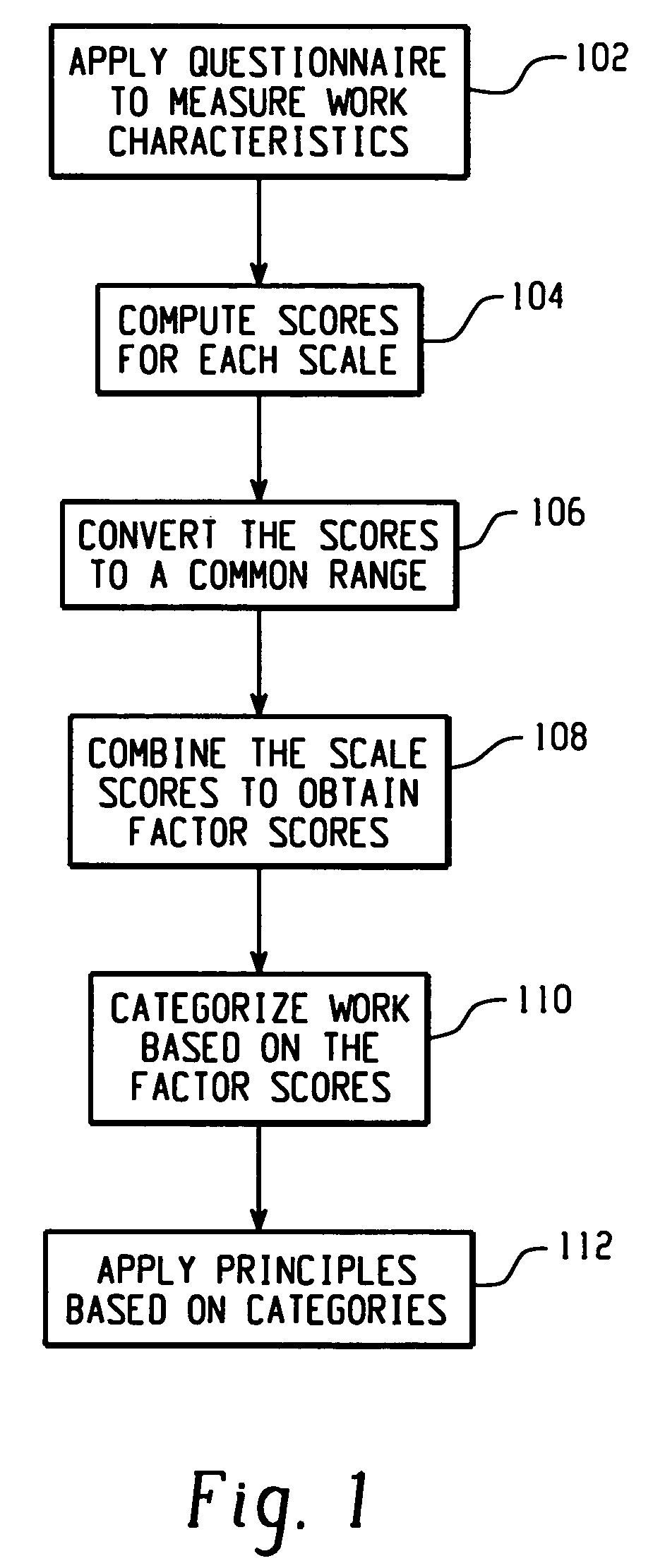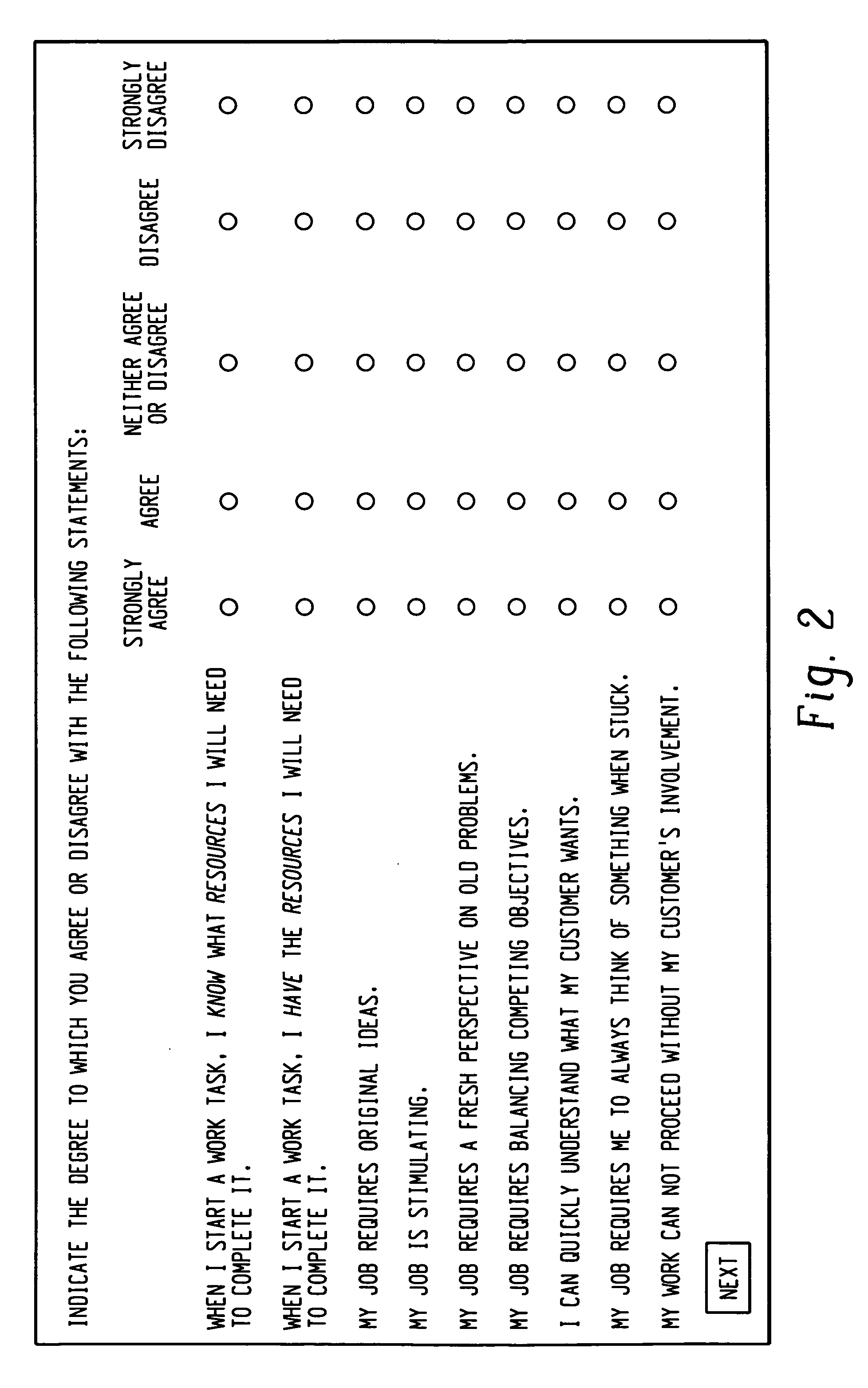Categorizing work in a work system
a work system and work technology, applied in the field of work categorizing, can solve problems such as appreciable improvement in productivity
- Summary
- Abstract
- Description
- Claims
- Application Information
AI Technical Summary
Benefits of technology
Problems solved by technology
Method used
Image
Examples
Embodiment Construction
[0018]FIG. 1 is a block diagram of an exemplary process for categorizing work in terms of various characteristics of the work process and / or the work environment. As used herein, the term “characteristics” refers to characteristics that may be utilized to classify different types of work. Characteristics may include, but are not limited to, creativity, exceptions, analyzability, goal ambiguity, worker initiative, input ambiguity, task difficulty, interdependence, autonomy, interaction intensity, and feedback. Creativity refers to the degree to which the work output is something new to the people who use it and is valuable to themselves or to others. Exceptions refer to the degree of time spent applying different methods and / or procedures for performing the work. Analyzability refers to the degree of definition of the sequences, procedures and practices for performing a work task. Goal ambiguity is the degree to which the outcome goals and objectives of the work are clearly stated an...
PUM
 Login to View More
Login to View More Abstract
Description
Claims
Application Information
 Login to View More
Login to View More - R&D
- Intellectual Property
- Life Sciences
- Materials
- Tech Scout
- Unparalleled Data Quality
- Higher Quality Content
- 60% Fewer Hallucinations
Browse by: Latest US Patents, China's latest patents, Technical Efficacy Thesaurus, Application Domain, Technology Topic, Popular Technical Reports.
© 2025 PatSnap. All rights reserved.Legal|Privacy policy|Modern Slavery Act Transparency Statement|Sitemap|About US| Contact US: help@patsnap.com



